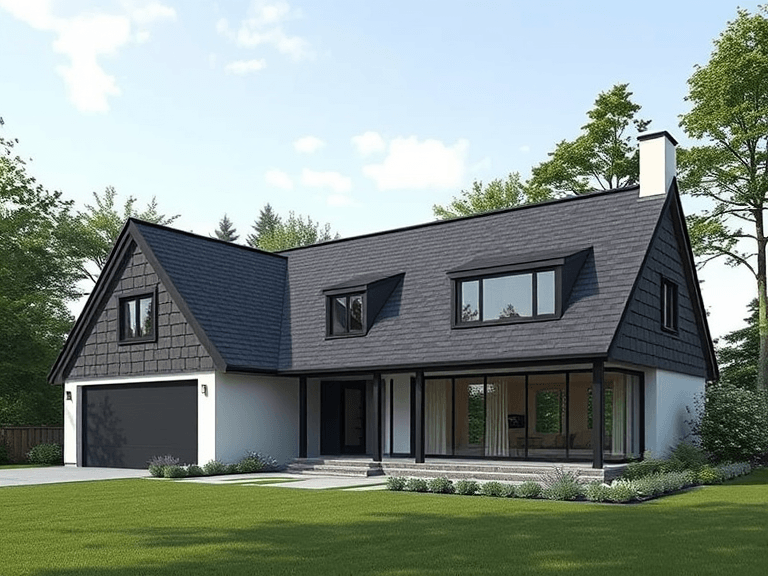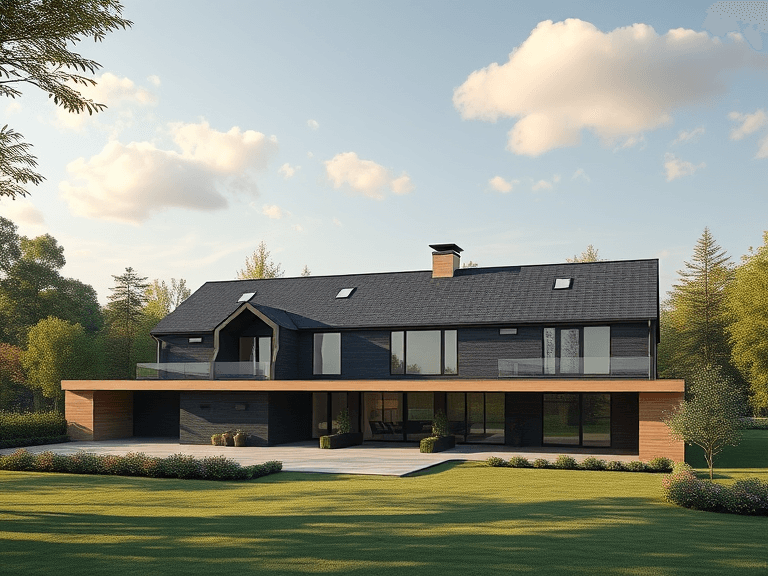
Asphalt roofing shingles are an increasingly popular choice among homeowners for their affordability, aesthetics, and ease of installation. These shingles serve as a primary barrier against external elements, safeguarding the underlying structure from rain, snow, wind, and UV rays. The widespread use of asphalt shingles in residential roofing projects can be attributed to their versatility and effectiveness in providing long-lasting protection.
Essentially, asphalt roofing shingles are made from a base mat, usually fiberglass or organic felt, which is coated with asphalt for waterproofing. This layer is typically reinforced with granules that serve both protective and decorative purposes. The granules not only provide color options but also enhance the shingles’ resistance to harsh weather conditions, thereby extending their lifespan. The materials used in asphalt roofing shingles are specifically engineered to withstand environmental challenges while maintaining aesthetic appeal.
There are two primary types of asphalt shingles available on the market: three-tab shingles and architectural shingles. Three-tab shingles are known for their flat appearance and are commonly used due to their lower cost. Conversely, architectural shingles, also referred to as dimensional shingles, provide a more textured look and additional durability. These shingles possess a layered structure that enables them to better withstand strong winds and other extreme weather conditions. Each type of shingle caters to different homeowner needs, ensuring that there is a suitable option for a variety of roofing projects.
In conclusion, asphalt roofing shingles combine functionality and style, making them a reliable choice for many residential structures. Understanding the components and varieties present in these shingles can assist homeowners in making informed decisions regarding their roofing systems.
Key Components of Asphalt Roofing Shingles
Asphalt roofing shingles are primarily composed of several key materials that work in tandem to provide durability and longevity to roofing systems. Understanding these components can aid in appreciating their performance and reliability in various climatic conditions. The foundation of asphalt shingles typically consists of a fiberglass mat, which is critical for providing strength and flexibility to the shingle structure. This mat is usually coated with a layer of asphalt, which not only serves as a waterproof barrier but also enhances the bonding of the other materials.
The asphalt used in roofing shingles is a viscous substance derived from petroleum. It lends excellent weather resistance, making them highly effective at repelling water and protecting against the elements. Along with the fiberglass mat and the asphalt, granules are also an essential element of asphalt shingles. These granules, often made from crushed rock or ceramic-coated granules, serve multiple purposes. They act as a protective layer against UV radiation, helping to minimize the degradation of the asphalt over time and extending the shingles’ lifespan.
Moreover, the granules enhance the aesthetic appeal of the shingles, as they are available in a wide variety of colors and styles. Additional additives may be included in the formulation of the asphalt itself to improve its performance characteristics. These may include fire retardants, which help to meet safety standards, and anti-algae treatments, which can prevent the growth of mold or moss that damages the shingles and affects their appearance.
In summary, the combination of the fiberglass mat, asphalt, granules, and various additives is fundamental to the integrity of asphalt roofing shingles. Each layer plays a significant role, contributing to the overall performance, durability, and aesthetic appeal of the roofing material. Understanding these components empowers homeowners and builders to make informed decisions regarding roofing installations and maintenance.

Types of Asphalt Roofing Shingles
Asphalt roofing shingles are widely popular due to their affordability, durability, and ease of installation. Among the various types of asphalt shingles, the most common include 3-tab shingles, architectural shingles, and luxury shingles. Each type presents unique characteristics that cater to different aesthetic preferences and budgets.
3-tab shingles are the most traditional and economical option available. They feature a flat, uniform appearance with three tabs cut into each shingle. This design allows them to have a consistent and classic look, making them a suitable choice for homeowners seeking a simple roofing solution. Despite their lower cost, 3-tab shingles generally have a shorter lifespan, often lasting up to 20 years. Their affordability, however, is a significant advantage, albeit with less visual appeal compared to other types.
Architectural shingles, also known as dimensional shingles, provide a more visually appealing option with a layered design that mimics the appearance of wood shakes or slate. These shingles are thicker than 3-tab varieties, which enhances their durability, often yielding a lifespan of 25 to 30 years. The additional cost associated with architectural shingles typically reflects their aesthetic appeal and superior performance. Homeowners appreciate their ability to provide more depth and dimension to the roof, contributing to the home’s curb appeal.
Luxury shingles represent the top tier of asphalt roofing options, featuring intricate designs and high-end materials that deliver exceptional beauty and longevity. They often resemble premium roofing materials, such as cedar or slate, yet come at a more affordable price point. While luxury shingles have a higher initial investment, their durability—as they can exceed 40 years—may offset long-term costs. The selection of luxury shingles can significantly elevate a home’s aesthetic, making them a compelling option for discerning homeowners.
In evaluating the different types of asphalt roofing shingles, understanding their distinctive features, costs, and performance can empower homeowners to select the best material for asphalt roofing shingles that aligns with their specific needs and preferences.
Environmental Considerations and Sustainability
As the demand for roofing solutions continues to rise, understanding the environmental implications of asphalt roofing shingles becomes increasingly important. This popular roofing material is primarily composed of asphalt, fiberglass, and mineral granules. While it offers durability and cost-effectiveness, the production and disposal processes of asphalt shingles carry significant environmental concerns. The extraction of raw materials, energy-intensive manufacturing, and eventual disposal in landfills contribute to the overall carbon footprint associated with asphalt roofing.
However, the roofing industry has made notable strides towards sustainability. One such advancement is the recycling of asphalt shingles, a process that recaptures valuable materials which can be reused in new shingles or repurposed for road construction. In fact, it is estimated that over 10 million tons of asphalt shingles are recycled annually in the United States. This not only reduces waste but also conserves resources, minimizing the need for new raw materials. Innovations in this area are paving the way for more sustainable alternatives to traditional asphalt shingles.
Moreover, there are eco-friendly alternatives being explored, including shingles made from recycled rubber and plastic, as well as those incorporating solar technology. These sustainable options demonstrate a commitment to reducing the environmental impact of roofing materials. Additionally, manufacturers are focusing on decreasing energy consumption during production processes and utilizing renewable energy sources to mitigate their overall carbon emissions.
It is crucial for homeowners and builders alike to consider the environmental footprint of the materials used in roofing. By opting for sustainable roofing solutions and responsibly sourced materials, stakeholders can play a vital role in promoting eco-friendliness in construction. Ultimately, understanding the implications of using asphalt roofing shingles encourages informed choices, leading to a more sustainable future in roofing practices.


